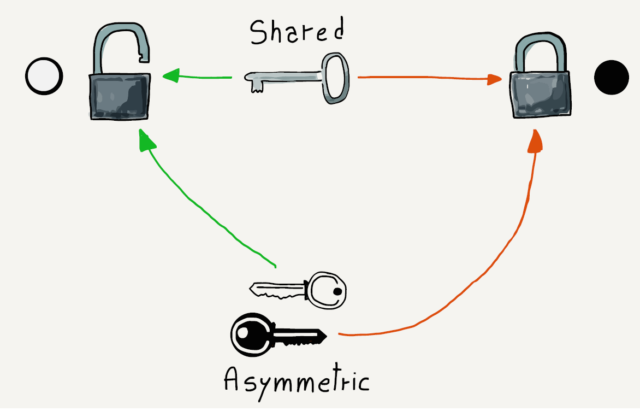The traditional way to encrypt transmissions is using a shared secret (a password, a sentence, a number) that only the sending and receiving parties know. With the secret, it is easy to decrypt the received data, but if you received the data without possessing the secret, it would be effectively impossible to decrypt the message.

In the early days of the Internet, two people could send encrypted email to each other by one person first calling the other person on the phone and giving them the decryption secret. This worked well when there were only a few users on the network, but could not scale to situations where a company might have millions of customers and could not afford to make a phone call to each customer to establish a shared secret before they could make a purchase.
It might seem like a good idea to distribute the shared secrets over the Internet, but if we assume that the attackers are monitoring and capturing all network traffic, they could also capture the unencrypted message that contained the shared secret. At that point it would be trivial for the attacker to use the shared secret to decrypt a message. And even worse, the attacker could intercept a message, delay it, then decrypt it, change and re-encrypt it, and send the modified message back on its way. The receiving computer would decrypt the message and never know that it had been modified by an attacker while in transit.
So shared secrets clearly would not work to solve the problem of securing network traffic between trillions of pairs of networked computers.
The solution to this problem came in the 1970s when the concept of asymmetric key encryption was developed. The idea of asymmetric key encryption is that one key is used to encrypt the message and another key is used to decrypt it. The computer that will be receiving the encrypted data chooses both the encryption key and decryption key. Then the encryption key is sent to the computer that will be sending the data. The sending computer encrypts the data and sends it across the network. The receiving computer uses the decryption key to decrypt the data.
We call the encryption key the “public” key because it can be widely shared. We call the decryption key the “private” key because it never leaves the computer where it was created. Another name for asymmetric keys is public/private keys.
The whole process is designed so that if an attacker has the public key (which was sent unencrypted) and the encrypted text, it is virtually impossible to decrypt the encrypted data. There is a lot of math with large prime numbers that makes it hard to guess the private key from the public key and encrypted data.
So with the advent of public/private key technology, the only question left was how to apply it in our network model.